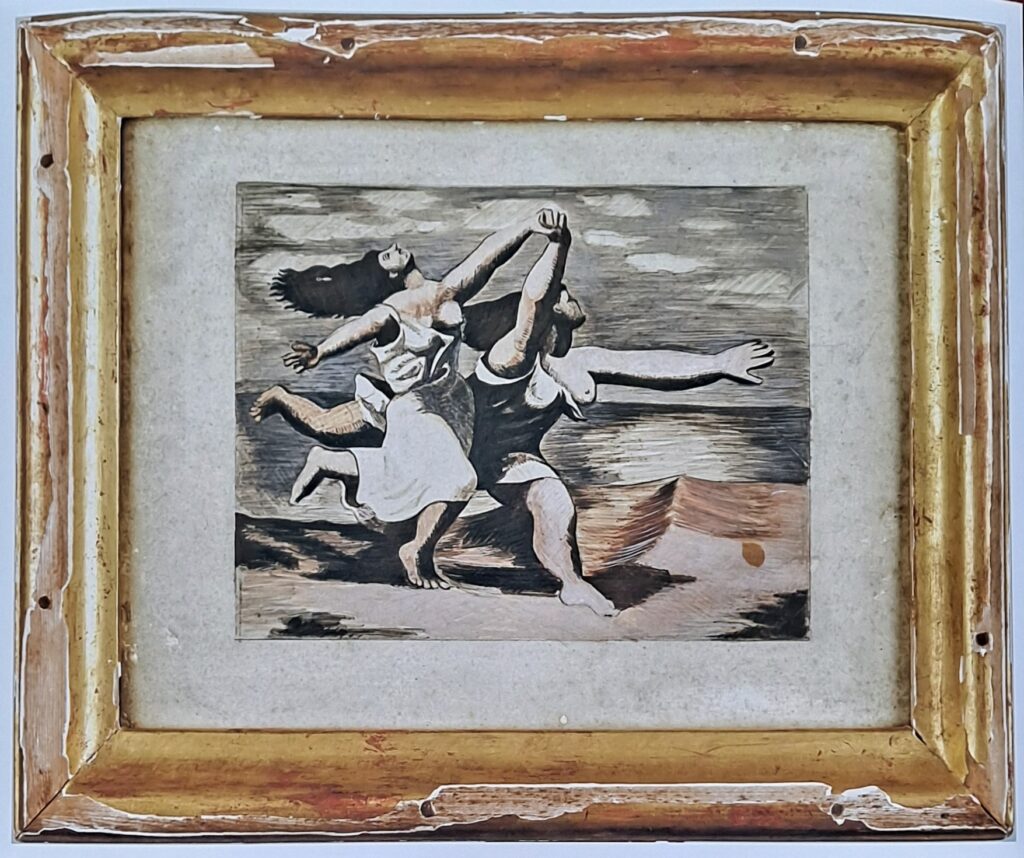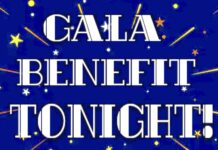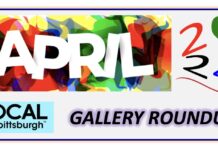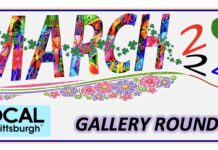THIS SATURDAY Jan. 6, one of Pittsburgh’s most eclectic and prolific art collectors presents the first of 8 weekly shows featuring 70 artists in a museum space endowed by a 19th-century painter who created over 1,000 works during his lifetime and pointedly refused to sell or display a single one.
The themed exhibit series is titled Live • Worship • Shop: Eight Iconic Exhibits from the P.J. McArdle Collection and encompasses 300+ items spanning a multitude of traditional and modern styles.
The venue is the John A. Hermann Memorial Art Museum, 318 Lincoln Ave. in Bellvue, just a few blocks from the borough’s exuberant gateway “Live Worship Shop” sign at Riverview Avenue and Route 65. Saturday’s opening reception runs from 6-9 p.m. and is admission-free.
The kickoff show is Pershing, Picasso and Pittsburgh and includes 35 pieces by renowned Pittsburgh painter and sculptor Louise Pershing … along with a version of Pablo Picasso’s famous Two Women Running on the Beach dating from the artist’s Neoclassical period.
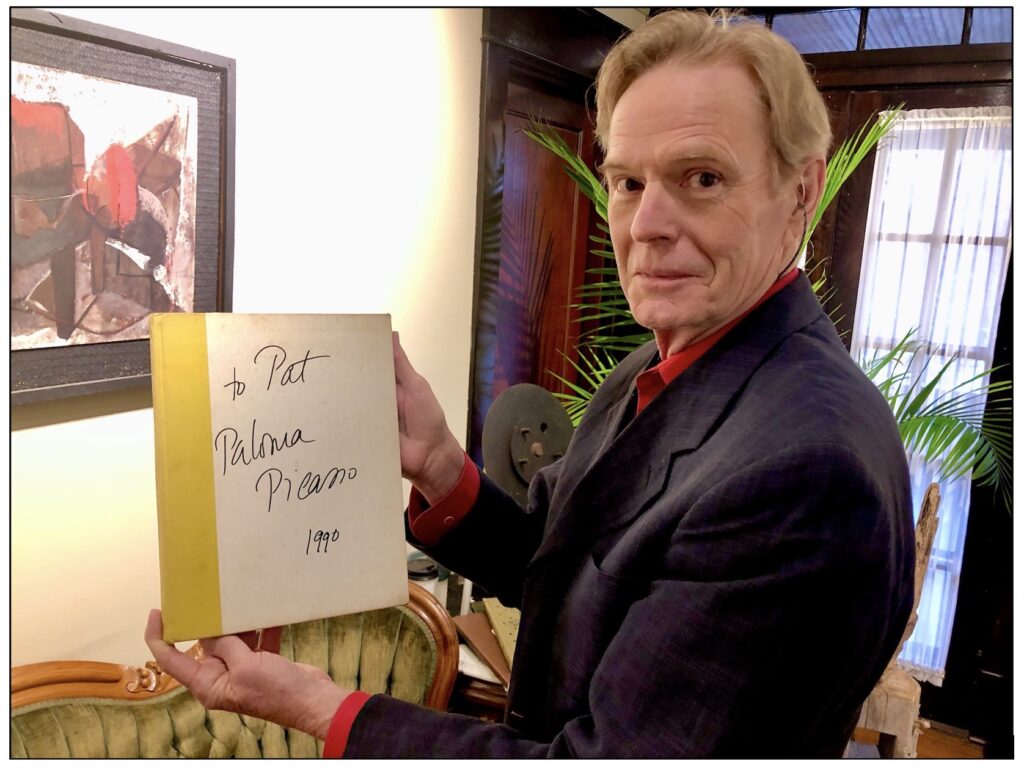
P.J. McArdle described the genesis of the series. “I saw Paul Cusick (executice director of the museum) and asked him what he had coming up at the museum. ‘Nothing,’ he said. ‘Nobody wants to do anything in the winter.’ I said, ‘Well, I will. I’ll do 2 shows, one for January and one for February — Folk and Outsider Art and Self-taught and Fine Art.’”
Those two shows quickly morphed into eight shows in eight weeks and represent a fascinating catalogue of Pittsburgh’s homegrown visual artmakers over the last century.
Among the artists presented in future weekends are Henry Bursztynowicz, Glen Davis, Frank Komperda, Lonnie Holley, Esther Phillips, Robert Qualters, Thad Mosley, Amir Rashidd, Aaronel deRoy Gruber, Mr. Imagination, Teenie Harris, Vanessa German, Carl Dingbat Smith, Karl Mullen, John Cleveland, Chuck Barr, Bo Hill, VaultArt Studio artists and artists from the families of Andy Warhol and Howard Finster.
Louise Pershing (1904-1986) was a Pittsburgh native at the center of the city’s art milieu for over 50 years. “Louise was a force in Pittsburgh,” says McArdle. “Irene Pasinski, another artist who was somewhat younger, told me one time, ‘You know, we all wanted to be Louise.'”

IN THE 1920s Pershing studied at Carnegie Tech and University of Pittsburgh, crafting her technique from instructors like industrial designer Alexander Kostellow, post-impressionist Giovanni Romagnoli and abstract expressionist Hans Hofmann.
She joined Associated Artists of Pittsburgh in 1927 and commenced an active professional career that saw her paintings exhibited at galleries and museums around the world and for three Carnegie Internationals.
Early in her artistic journey, Pershing survived a minor public scandal when her 21-foot mural Education versus Crime roused the philistinical ire of the citizenry of Dormont.
Painted in 1934 for Hillsdale Elementary School in Dormont as a commission from the federal Public Works Administration, the mural juxtaposed the life advantages of education against the moral degradation resulting from ignorance.
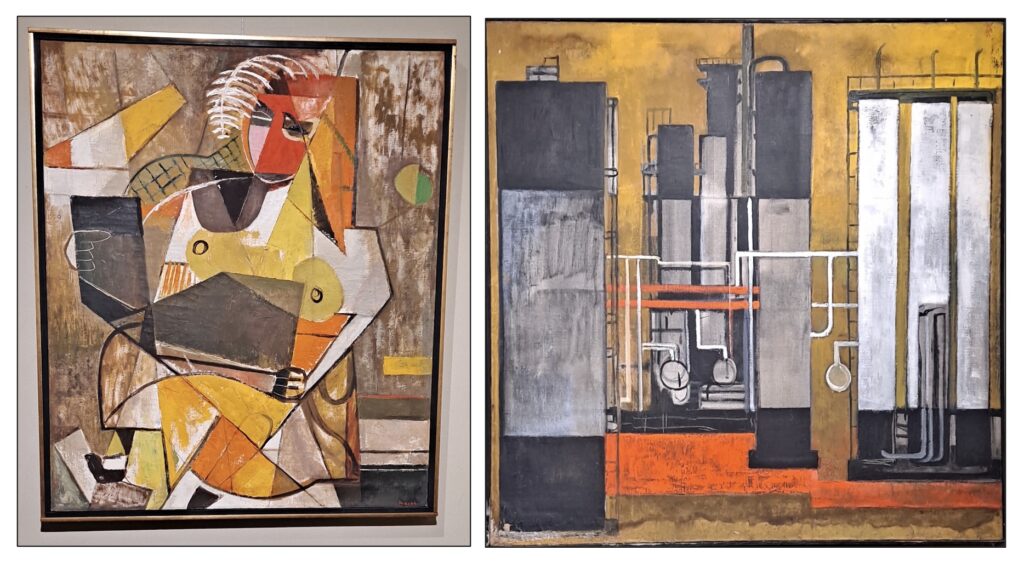
With the “dignified figure of Education” anchoring the center, the left side depicted the benefits of a “higher life”, while the right section represented crime, disease, poverty, gambling, prostitution, revolution, war and other social ills.
“On the opposite side of Education I have shown the results of the lack of education,” Pershing explained to a Pittsburgh Press reporter. “Here you see the forces of destruction, represented by the battlefields; a child crime represented by a murder; and a woman of the street.”
It was that devotion to realism that led the school’s Parent-Teachers Association to demand the mural’s removal lest the imagery inflame impressionable student eyes. Pershing acquiesced but remained defiant.
“I consider it a compliment that the people of Dormont feel they cannot accept my mural,” she riposted. “That shows it is beyond their intelligence and understanding. If they accepted it readily and with applause, I would doubt if I had created anything worthwhile.”
The following year, Pershing triumphantly displayed the work in her one-woman show at the Gulf Gallery.
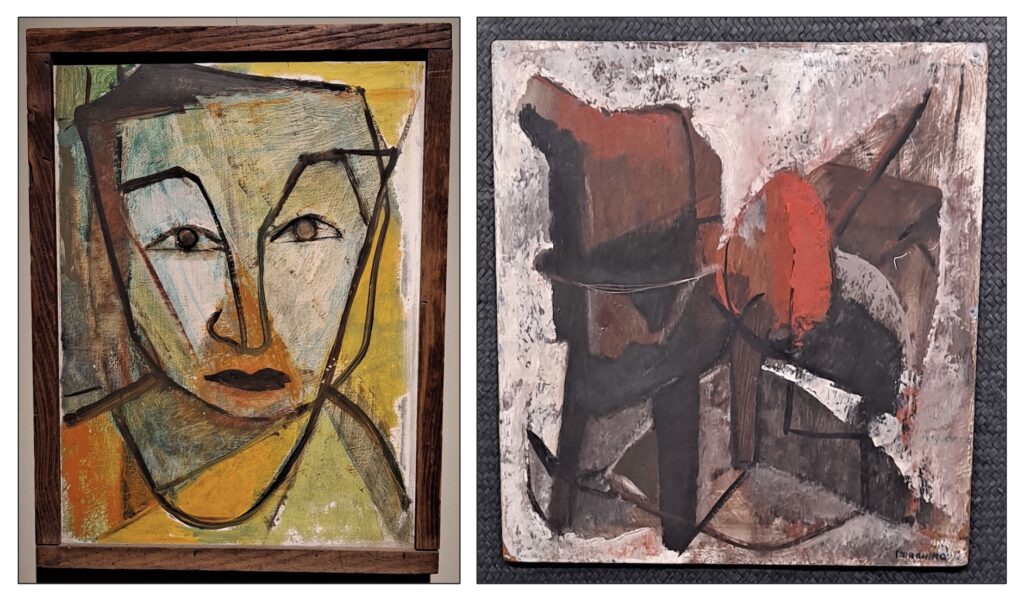
After three decades as a successful painter, Pershing took up welding using found objects to create her own style of “kinetic sculpture” that merged pop art and 3D movement.
Her 1972 abstract steel sculpture The Flow remains outside the U.S. Steel Tower at Sixth Street and Bigelow Square in downtown Pittsburgh. Inspired by a visit to the Homestead Steel Works, it depicts the fluid patterns of urban life in a bustling city center.
“I find the ugliness of industrial Pittsburgh is its beauty,” she said in response to a question about her aesthetic inspiration. “Machinery to me is beautiful in its simplicity and precise engineering as compared to the less controlled and directed human being in his striving and searching for an understanding of life and his ability to enjoy it.”
During the 1950s and ’60s, Pershing helped foster the city’s art community by opening Studio 130 gallery on North Bellefield Avenue, occupied today by an office building housing the University of Pittsburgh School of Computing & Information and the Center for Aging and Population Health.
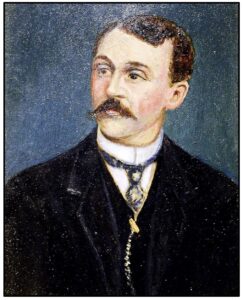
CONTRASTED WITH Louise Pershing’s formal art education and early acclaim, the creative talents of Northside businessman John A. Hermann, Jr. (1855-1942) were entirely self-evolved and took longer to bloom.
Up until his mid-fifties, Hermann painted only on weekends and declined to sell or distribute his work. At his death, he bequeathed nearly 1,000 beautifully framed paintings to the citizens of Bellvue.
He painted local Pittsburgh scenes, seascapes and hotels from vacation trips to Florida and New Jersey, recreations of Bavarian castles and other European vistas he encountered on numerous Continental excursions and studies of Seminole tribal culture and African-American life in the deep South during the 1920s.
Hermann was a lifelong bachelor. According to a 1978 Pittsburgh Post-Gazette article quoting his niece, Marcella Dillman, “Art was his love. He kept to himself for the most part. When he was home, he was upstairs painting.”
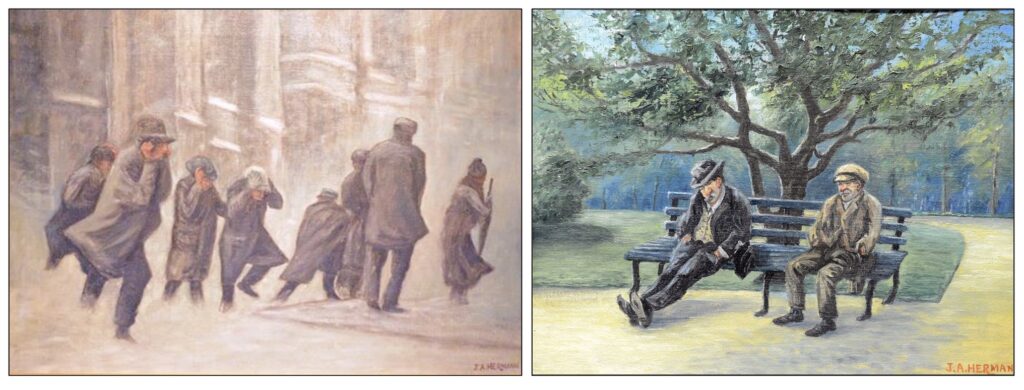
In 1939, at age 84, Hermann bought the 16-room Dewar mansion at 661 Lincoln Avenue in Bellevue (where Kuhn’s Market now stands) and set about organizing his works and preparing a gallery catalog. He died three years later before finishing, and the massive collection moved around Bellvue until 1976 when his estate trustees secured the house at 318 Lincoln.
Besides the work of its founder, the museum has in recente years exhibited contemporary artists Diane Grguras, Lorena Woods, William W. White, Jr., Claria Scioscia, William Spolar, Anders Anderson, Denise L. Fantazier, Alan Byrne, Erin Morris, Robert Huckestein and others.
More information on each Live • Worship • Shop show is at the John A. Hermann Memorial Art Museum website. The museum is open on Sundays from 1-4 p.m.
___________________
Live • Worship • Shop: Eight Iconic Exhibits from the P.J. McArdle Collection
Jan. 6 – Pershing, Picasso and Pittsburgh
Jan. 13 – The Warhola Family of Artists & Howard Finster Family of Artists
Jan. 20 – Pittsburgh Modernists
Jan. 27 – International Artists of Instagram
Feb. 3 – African and African-American Artists
Feb. 10 – Self-taught Artists
Feb. 17 – VaultArt Studios
Feb. 24 – P.J.’s Favorites
